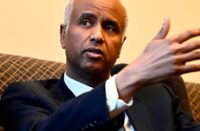The United Nations recently agreed on a plan to invest a minimum of $300 billion each year into the battle against climate change. This funding is intended to assist poorer nations in dealing with the damaging effects of global warming, a decision made during challenging discussions in the city where the oil industry was born.
The funds will be directed towards developing countries that require financial assistance to transition away from coal, oil, and gas, which are contributing to global overheating. The money will also be used to accommodate future warming and cover the costs incurred from the severe weather conditions brought about by climate change. Although the amount falls short of the $1.3 trillion that was originally requested by developing countries, it is three times the amount agreed upon in a 2009 deal, which was $100 billion annually. Some representatives believe this agreement is a step in the right direction, with the hope that more funding will be available in the future.
However, the consensus on the agreement was not unanimous, and developing nations expressed their dissatisfaction about being overlooked. The agreement was approved before any nation had the opportunity to voice their opinions, leading to accusations of unfairness. The dissatisfaction was particularly strong from India, with their negotiator Chandni Raina criticizing the deal for its inadequacy and expressing her lost faith in the United Nations system.
Despite the backlash, there were some parties that deemed the agreement satisfactory. The European Union’s Wopke Hoekstra referred to it as a new era of climate funding aimed at aiding the most vulnerable. Meanwhile, Ireland’s environment minister, Eamon Ryan, described the agreement as “a huge relief.”
While critics argue that the deal falls short of the necessary $1.3 trillion, it is a notable increase from the $250 billion that was initially proposed. The deal is perceived as a significant step towards enabling recipient countries to establish more ambitious targets to limit or reduce emissions of heat-trapping gases. This aligns with the plan agreed upon at the 2015 U.N. talks in Paris to continue reducing pollution with new targets set every five years.
The hope is that this deal will encourage funding from other sources, such as multilateral development banks and private sources. Despite concerns about the potential for such funding to result in more debt for poorer nations, the World Resources Institute President Ani Dasgupta referred to the $300 billion goal as an important down payment towards a safer, more equitable future.





